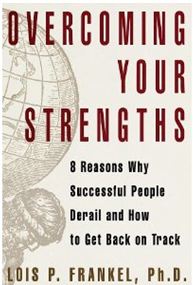Most people underestimate the likelihood that requests for help will be granted, particularly after previous refusals, according to Stanford’s Daniel Newark and Francis Flynn with Vanessa Lake Bohns of University of Waterloo.

Francis Flynn
In fact, most people agree with a subsequent request, possibly to reduce discomfort of rejecting others’ overtures for help.
Participants estimated they would need to ask 10 people to get three people to lend their mobile phones for brief calls.
Results showed that volunteers only had to ask six people for help before it was given, 40% fewer than expected.
Most people have a pessimistic bias about the likelihood that others will provide assistance, they concluded.
In another study, volunteers requested two favours from people they did not already know: Complete a brief survey and take a letter to a nearby post office.
Help seekers predicted that people who refused the first request to complete the survey would be less likely to take the letter to the post office.
More people agreed to the second request than to the first request.
Requesters tended to “anchor” on the first refusal, and hesitated to make a second request.
This finding suggests that requesters have a greater chance of agreement after initial refusal, so it’s advisable to persist.
Requesters and help-seekers analyzed requests using different implicit criteria: Requesters focused on the magnitude of the “ask,” whereas potential helpers considered the inconvenience costs of saying “yes” compared with the interpersonal and self-image costs of saying “no.”
Requesters benefit from expanding the pool of those they ask, not just those who consistently agree.
Potential helpers to can assist by reducing help-seekers’ subjective discomfort even if they decline the request.
Bohns analysed interpersonal discomfort when people decide whether to commit an unethical act in research with University of Waterloo colleagues Mahdi Roghanizad and Amy Xu.
People who observed the unethical act but didn’t participate in it underestimated their influence over those who committed the actions.
Interpersonal discomfort caused participants to commit the asocial act to avoid conflict, they concluded.
Volunteers asked people they didn’t know to tell a small untruth or to commit a small act of vandalism after predicting the ease of enlisting others in these acts.
In related investigations, online participants responded to hypothetical vignettes about buying alcohol for children, and taking office supplies home for personal use.
These results suggest that most people underestimate their influence, particularly in situations that can evoke interpersonal discomfort.
Bohns and Flynn also reported that employees’ systematically underestimate their influence over others in the workplace.
This pessimistic bias can limit employees’ willingness to:
- Lead business transformation initiatives,
- Recognize personal contributions to others’ performance issues,
- Voice concerns about unethical workplace practices.
This underestimation bias may be reduced by:
- Eliciting comparative judgments,
- Objectifying an influence target,
- Comparing actual degree of personal influence compared to perceived influence,
- Considering the means of influence, including incentives, suggestions, reinforcements, punishments,
- Invoking organizational culture.
These findings suggest the benefit of asking for what you want, even after rejection and that you have more influence over others than you expect.
-*How do you assess your likelihood of getting what you want when you ask?
-*How likely are others to influence you by evoking social discomfort to increase your compliance?
RELATED POSTS:
- “Everything is Negotiable”: Prepare, Ask, Revise, Ask Again
- Women Don’t Ask for Raises or Promotions as Often as Men
- Women’s Likeability–Competence Dilemma: Overcoming the Backlash Effect
- Power Tactics for Better Negotiation
©Kathryn Welds
































































